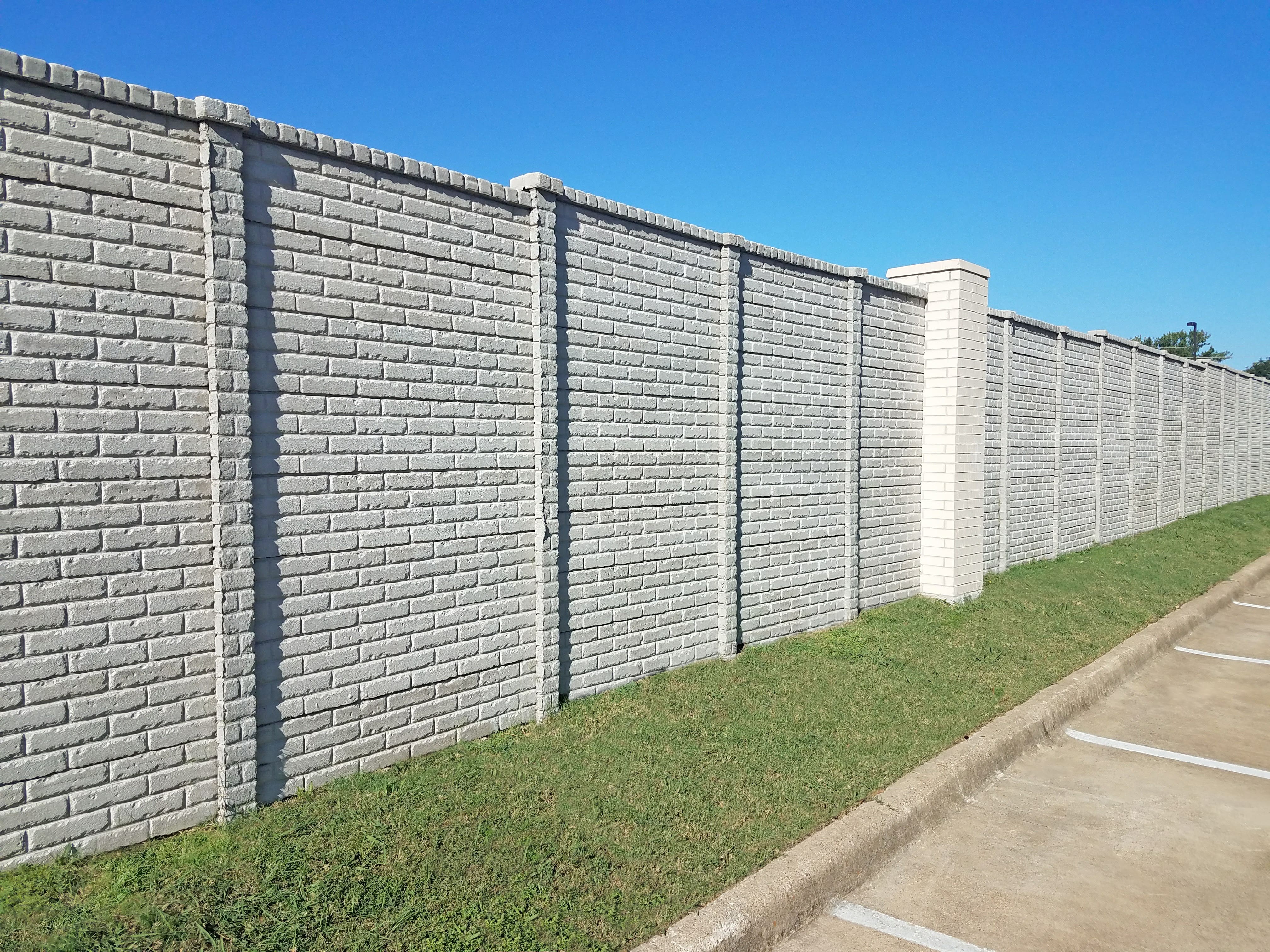3 min read


At Hilltop Concrete we are proud of our precast concrete fences and the components we use to install our systems. Each of our precast concrete products are manufactured at our yard in Texas and delivered to each jobsite ready to be installed. There is a good reason why we use precast concrete for all of our fencing systems. It provides many benefits on a project, including quick and easy installation, it is aesthetically pleasing and it provides a high-quality, higher-strength product since it is produced in a controlled environment. We have explained in the past how a precast concrete fence compares to wooden fencing and traditional masonry, but how does a precast concrete fence stack up to a CMU block wall?
Precast concrete components are made by pouring concrete into forms in a controlled environment and allowed to cure prior to being shipped to the site for installation. Each of our concrete fence components has rebar embedded into the concrete during the pour. A CMU block wall is built by stacking 8” x 8” x 16” concrete blocks. With a CMU block wall, the steel reinforcement is typically placed after the blocks are stacked and secured using grout or concrete after the blocks have been placed. While both are made from concrete, this is where the similarity ends and the superiority of a precast concrete fence takes over!
One significant advantage of Hilltop’s precast concrete fence systems is the ease of installation. A precast concrete fence system means we only have to place the fence rather than build it from the ground up! Once the posts are set, each panel section is easily stacked and leveled. This takes a load off of your plate so you can focus on other things that need to be done for the completion of your project. With a standard CMU block wall, installation first requires a trench, usually 18” wide by 8” deep, to be dug in order to first pour an expensive and heavy concrete footer. This footer then needs time to properly cure before the wall can be formed on top of it. Once the footer is ready, each block must be hand stacked and set with mortar. After the wall is formed, the reinforcing steel must be placed and then concrete must be poured into the hollow voids of the blocks to secure the reinforcing steel. This installation process is timely, labor intensive, and expensive.
Precast concrete fencing provides a beautiful addition to any property as well! Hilltop offers a variety of patterns to set your fence apart and our team is available to ensure you are well-informed prior to making your final decision. Whether you are looking for a stone, brick or wood look, we have you covered! Our precast concrete fence systems are available in StackedStone, OldBrick, ChiselStone, RanchRail, and WoodCast. Once your pattern has been chosen, you can further customize the height and color of your fence. This means that a precast concrete fence can provide an endless array of options to choose from to ensure your fence exceeds your desired expectations! This is not a benefit that you can gain from a CMU block wall without applying a veneer to the CMU wall. This veneer not only adds more time to the overall installation schedule but also adds significant costs and maintenance down the road.
At Hilltop Concrete we are not shy about bragging about our products and the benefits of a precast concrete fence. We only offer the highest quality precast concrete fence components and our customer service is unmatched. We are proud to continue helping architects, engineers, developers, and contractors with a variety of precast concrete projects. To learn more about the benefits of a precast concrete fence, please reach out to us at hello@hilltopconcreteco.com or call our office at 903-630-5465.